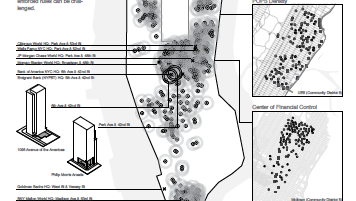
Introducing #whoownspace
#whOWNSpace is a collaborative started by DSGN AGNC with Not An Alternativeand DoTank:Brooklyn, organizations that have been dealing with spatial politics. Other groups, organizations, and individuals will be joining soon, contact us if you are interested. Our goal is to gain many other collaborators and together learn from what has happened at Zuccotti Park (aka Liberty Square)– using design and art as an advocacy tool so that community groups and activists can continue to use collectively owned and organized urban spaces to further their political, social, and economic agendas.
Project goals are:
1- TO REVEAL conflicting rules and ownerships in the increasingly privatized and commercialized spaces that make up the contemporary neoliberal urban condition
2- TO QUESTION those rules and the current state of our “public” space; discussing the intentions and conditions surrounding our open spaces
3- TO ADVOCATE FOR AND PROPOSE new uses and designs that encourage more public and open spaces for neighborhood uses in accordance to the Call to Action for the Rights of Neighborhoods
We Create Tools that Reveal Spatial Conflict / We Question Private Space / We Question Public Space / We Advocate for Change / We Conceive and Design Alternatives for Collective use
The 1% weOWNu map focuses on Privately-Owned Public Spaces (POPS) as well as institutions of private funding, specifying financial institutions that received bail-out funds in 2008. The goal of doing so, is to direct attention to the constitutions that control the flow of capital. These funding institutions are essential in the transfer of ownership from the city to private interests.
The 99% weOWNu map focuses on publicly-owned open spaces and the city agencies that control those holdings.
Both maps provide a framework for a larger study to:
-Comparatively map POPS and publicly-owned open spaces, identify their intentions, and understand the political, corporate, and economic entities that control them
-Organize with community and activist groups so that designers can collaboratively strategize to advance the use of these spaces.
In the next steps we will use interactive tools to gather information from a multitude of partners (RESEARCH), lead an event with The Public School NYC to begin to make sense of the information (PEDAGOGY), and work with designers and community groups to reclaim public space for the public good (#OCCUPY ACTIONS).



No Comments